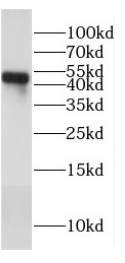Recombinant Human Superoxide Dismutase-1
Shipping Info:
For estimated delivery dates, please contact us at [email protected]
| Amount : | 25 µg |
| Purification : | Greater than 95.0% as determined by:(a) Analysis by RP-HPLC.(b) Analysis by SDS-PAGE. |
| Content : | SOD1 0.2um filtered solution contains 20mM Tris-HCl pH-7.5 and 10% glycerol. |
| Storage condition : | Store at 4°C if entire vial will be used within 2-4 weeks. Store, frozen at -20°C for longer periods of time. For long term storage it is recommended to add a carrier protein (0.1% HSA or BSA).Avoid multiple freeze-thaw cycles. |
| AA sequence : | MATKAVCVLK GDGPVQGIIN FEQKESNGPV KVWGSIKGLT EGLHGFHVHE FGDNTAGCTS AGPHFNPLSR KHGGPKDEER HVGDLGNVTA DKDGVADVSI EDSVISLSGD HCIIGRTLVV HEKADDLGKG GNEESTKTGN AGSRLACGVIGIAQ. |
| Alternative Name : | Superoxide dismutase [Cu-Zn], EC 1.15.1.1, SOD1, SOD, ALS, ALS1, IPOA. |
Source : Escherichia Coli.
Recombinant Human Cu/Zn Superoxide Dismutase produced in E.Coli is a single monomeric non-glycosylated polypeptide chain containing 154 amino acids and having a total molecular mass of 15.9 kDa.The SOD1 is purified by proprietary chromatographic techniques.
Human Cu/Zn Superoxide Dismutase (SOD1) catalyzes the reaction between superoxide anions and hydrogen to yield molecular oxygen and hydrogen peroxide. The enzyme protects the cell against dangerous levels of superoxide. SOD1 binds copper and zinc ions and is 1 of 3 isozymes accountable for destroying free superoxide radicals in the body. The encoded protein neutralizes supercharged oxygen molecules, which can damage cells if their levels are not controlled. Mutations in SOD1 cause a form of familial amyotrophic lateral sclerosis.
Specific activity is > 1,000 units/mg, in which one unit will inhibit the rate of reduction of cytochrome c by 50% in a coupled system, using xanthine and Xanthine oxidase at pH 7.8 at 25°C.
For Research Use Only. Not for use in diagnostic/therapeutics procedures.
|
There are currently no product reviews
|





















.png)








